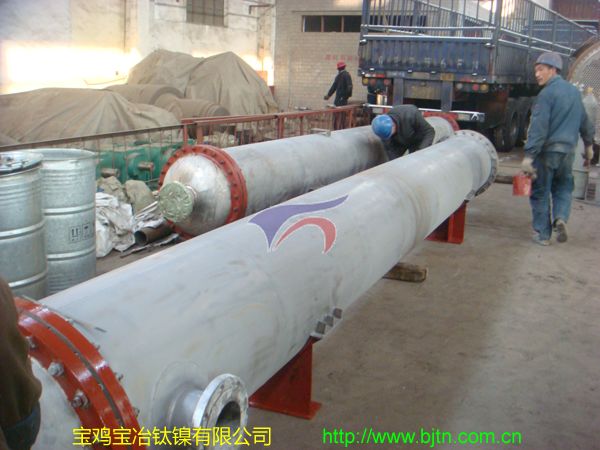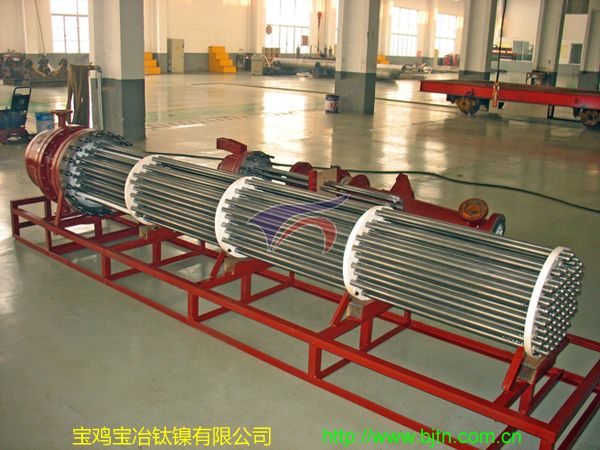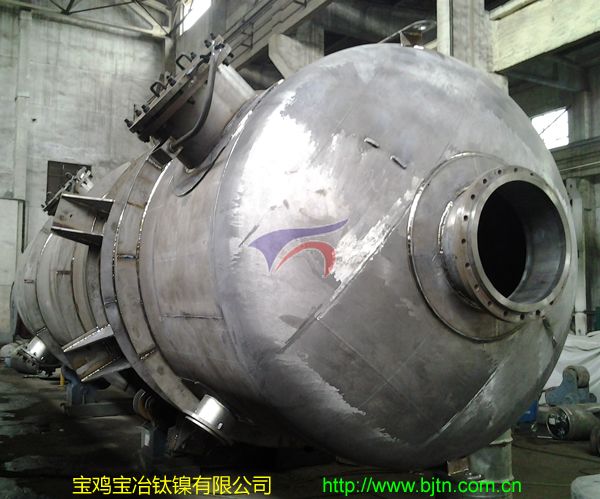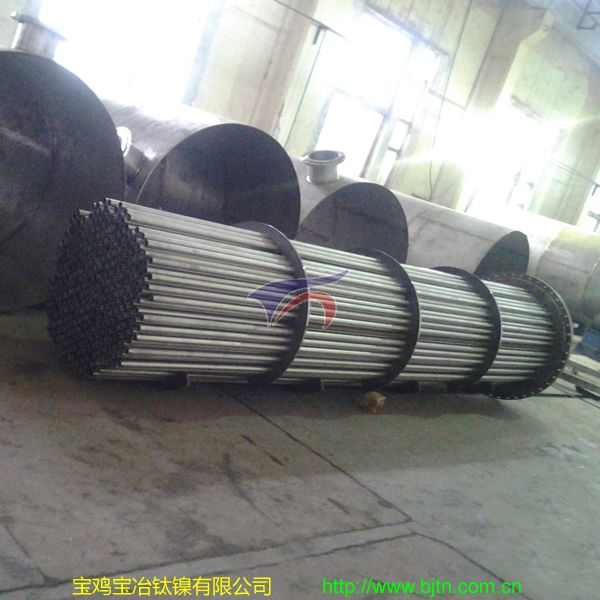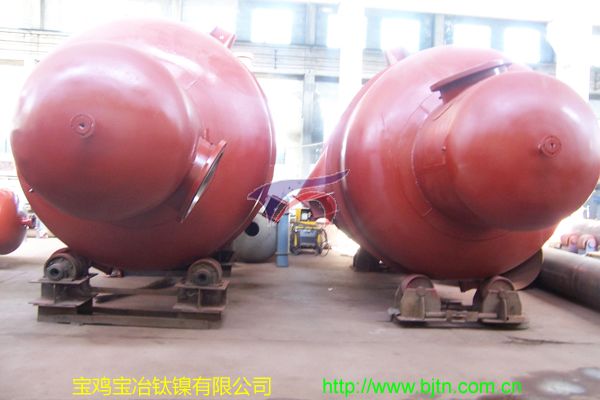TITANIUM NICKEL PRESSURE VESSELS
Basically, a heat exchanger helps is the efficient transfer of heat from one medium to the next, while at the same time preventing any mix or direct contact between the two. Typically, a heat exchanger is used in the transfer from one fluid to another. Heat exchangers are commonly utilized in a number of industries such as sewage treatment, petroleum refineries, chemical plants, power plants, petrochemical plants, air conditioning, refrigeration and space heating to mention but a few. Because they tend to salvage as much energy or heat as possible, they tend to be utilized in a number of factories to help cut down costs.
Think of a car and what prevents its engine from overheating. The car radiator is an example of heat exchanger. Antifreeze, which is a solution of water and ethylene glycol transfers heat from the engine to the radiator. The heat is then transferred to the ambient air that flows through it hence doing away with overheating. The same logic applies to a number of equipments that require cooling beyond what can be provided by the air-cooled heat sinks.
Heat exchangers can be distinguished from the direction of liquid flow. The direction can be a cross-flow, parallel-flow or countercurrent flow. Cross-flow heat exchangers have the fluid paths running perpendicular to one another. Parallel-flow heat exchangers have both fluids flowing in the same direction while entering and exiting the exchanger side by side. Countercurrent heat exchangers on the other hand, which are also the most effective, have the fluids flowing in opposite directions.
Types of heat Exchangers
There are two common types of heat exchangers available; shell and tube as well as plate/ fin heat exchangers. Others include; Adiabatic Wheel, Regenerative, Dynamic scraped surface, Pillow plate, Phase-change, Double pipe and Fluid heat exchanger among others.
A brief look at the common two:
- Shell and tube Heat exchangers: With these heat exchangers, one fluid flows through a set of metal tubes while the other fluid flows through the sealed shell that surrounds the tubes. The tubes present are dived into two sets, with one set containing the liquid which will be heated or cooled and the other set containing the liquid which will be responsible for triggering the heat exchange; it will also be responsible for either removing the heat from the first set of tube or warming the set by sending out its own heat to the liquid inside. Three flow path patterns can be assumed with this type of heat exchanger and these are the cross-flow, counter-current or parallel flow. In terms of design, the utmost care has to be taken in determining the right tube diameter and tube wall thickness if heat exchange is to be optimized.
- Plate Heat Exchanger: These types of heat exchangers comprise of a lot of thin metal plates or fins with a large surface area, which surface area facilitates the quick exchange of heat. Typically, this type of heat exchanger is used in refrigeration applications
Materials used in the manufacture of Heat Exchangers
Different heat exchangers call for different materials, depending on the fluids or vapor that will be handled by them. Process conditions such as temperatures and pressures will also determining the type of material used in the heat exchanger. Common materials include, carbon steel, stainless steel, nickel, nickel alloy, titanium, brass, copper or bronze.
The Shell and Tube heat exchanger for example generally has the outer shell made out of stainless steel or carbon steel, both of which are durable, high strength material. The materials usually utilized in the inner tubes include stainless steel, copper and nickel alloy; basically material that are corrosion resistant, durable and have good thermal conductivity.
Titanium as a material and why it is used in heat exchangers
Titanium is one of the materials used in a number of heat exchangers. The major reason for its use is its high corrosion resistance in addition to high strength to weight ratio. Different grades of titanium are available, with pure titanium, which is grade 1-4 being the preferred material of choice in heat exchangers. The most common grade used is grade 2 simply because it boasts of a moderate strength and provides for excellent corrosion resistance and formability.
Plate heat exchangers normally utilize grade 1 titanium while the matrix-plates in shell and tube heat exchangers normally utilize grade 3 titanium. Owing to its exceedingly high strength, grade 5 is utilized in aerospace and subsea while grade 7 is mainly utilized in the chemical industry thanks to its superior corrosion resistance. Grade 12 on the other hand provides for better heat resistance as compared to grade 1 or pure titanium.
Standards utilized in the production of heat exchangers
Without standards being set, anything would basically go. Any design, thickness, or material would be used in the manufacture of heat exchanges or any other product for that matter. TEMA (The Tubular Exchanger Manufacturers Association, Inc) is the leading authority for the shell and tube heat exchanger worldwide. With TEMA, the corrosion allowances, minimum thickness, testing requirements, particular design requirements, aspects of operation, tolerances, as well as maintenance and guarantees are specified so that the most current, efficient design and manufacturing solutions are arrived at.
The pressurized components of the shell and tube exchanger are designed in accordance with codes such as ASME VIII (1993) or BS5500V (1994). The tubes have to have thickness tolerances of minus zero, plus 18% to 22% in the minimum wall tubes while the average wall tubes are set at plus and minus 8% to 10% of the normal wall thickness. The plate thicknesses are supposed to be in accordance with the channel diameter although normally, they are set at 6 to 13 mm for expensive alloys and 9 to 16mm for carbon and low alloy steels.
The list of standards goes on and on. In essence, with set standards, high technical standards can be arrived at hence making for the best possible products arriving on the market.

